|
The glory of the mountains is color. A great many people think that they see all that there is to be seen of the White Hills in one visit...but what if you could go into a gallery where the various sculpture took different attitudes every day? ...Would one season be sufficient to drain the interest of it? Thus the mountains are ever changing. They are never two days the same. --Thomas Starr King 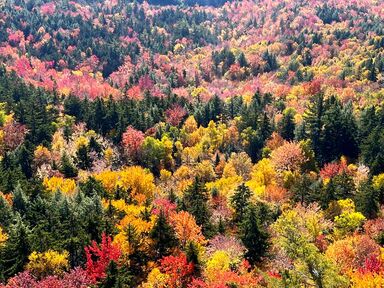 Spectacular foliage as seen from Allen's Ledge that I hiked under the next day...in the rain. Spectacular foliage as seen from Allen's Ledge that I hiked under the next day...in the rain. Hiked On October 12, 2022 Many years ago my mother-in-law came across a Walter Launt Palmer painting in a thrift shop in New Jersey. That painting eventually got her an appearance on the Antiques Roadshow. Back then this name was new to me. Palmer worked mostly in New Hampshire in the White Mountains and his work was heavily influenced by the Hudson River school that began about a generation earlier. Since that time I have seen his work in many American museums. I remember, too, an exhibit of "New Hampshire school" painting at Fruitlands where the emphasis was on the use of light, how it falls, and how it changes a scene. Light and color are both evident in his work. Somehow his paintings seem both over-the-top and true-to-life at the same time. He creates spaces the viewer can recognize and inhabit, while also understanding that the perfection of these works makes them somewhat other-worldly. It turns out Palmer is a big deal. Looking at his paintings--easily available for viewing online--you can experience some of the dynamism of the natural world. They draw us in. They compel us with their familiarity. We inhabit the scene because it is magical, too. The appearance of our lived landscapes alters with the season and the time of day. We experience this in all its glory when we leave our homes to journey farther into the wild. However, we are familiar with it from our own more mundane lives as well. Looking at the trees outside my window I can see them cycle through the seasons; from brown, to green, to yellow and red, then back to brown. When it rains they look different from when they are in the sun or the snow. We are used to this phenomenon. Still, for most people it remains fascinating. The Universalist and Unitarian minister, Thomas Starr King also saw this aspect of light and color. He is most associated these days with California, where he ministered and where a seminary is named in his honor. However, Starr King was a New Yorker and a New Englander before that. In fact, he wrote a book in the 19th Century style about what he called the "White Hills." Now one of those "hills" is named after him and resides on the 52 With-a-View List. The quote at the top of this post refers to something that many people who visit regularly have observed. The light changes constantly. So, too, does the color...and not just in the fall. The mountains "are never two days the same." This is why we go out into the natural world more than once a year. When we return to the same place at a different time, we are reminded that this thing called life is dynamic and ever-moving. We are all these things as well. 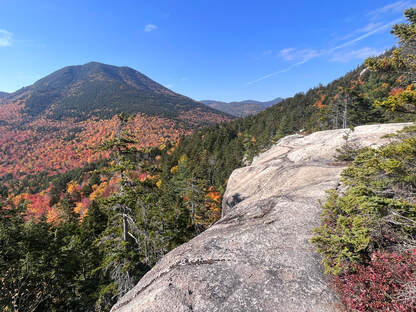 The narrowest part of the trail. The narrowest part of the trail. I climbed up Hedgehog on my own about 30 seconds after peak foliage. The weekend before--when we did the Carter Loop in the snow--was the busiest the Whites had ever been...or, at least, had been since the previous Indigenous People's Day weekend. Our drive home after that hike was a bit of a nightmare, actually. As I mentioned in my previous post, most peaks were crawling with people. This past week it was still crowded. However--just as with the Carters--one can find hikes where the more casual tourist doesn't go. They are looking for either the easy view or the famous mountain. I don't really blame them and have done so occasionally myself. Driving down the Kancamagus Highway on my way to the trailhead for Hedgehog, I saw overflow parking--cars along the road--at all the major trails and viewpoints. Random pedestrians popped out into my path to get a better angle on pictures of the Saco River and God knows what else. It was a bit chaotic even for the tail end of foliage season. Since I was in New Hampshire for a few days this time, I had planned at least a couple of more obscure hikes. This was the first of them. Pulling in the trailhead parking there was only one other car. The little mountain was pretty much neglected in favor of the more famous ones. That, of course, was my gain. After a quick conference with the couple in the car next to me, we chose different routes. My new acquaintances had a steeper climb straight to the peak. I decided to go counter-clockwise. I wanted to start with a clear view from a series of ledges over the Oliverian Brook valley toward Chocorua, Paugus, and then--most strikingly--to Passaconaway only two miles away. Passaconaway is a massive mountain I would rather look at than climb a second time. I knew that the direction I was going would put it front-and-center as I walked along. The early ledges were pretty much all that I expected them to be. Colorful hardwoods crawled up the slopes from their lower vantage point, attempting, maybe, to pull the dark, massive, pines back down toward them. I had to concentrate a bit on the early ledges that ended abruptly in a steep drop toward the valley floor, but that was not too much of a challenge. Also, having to focus on the ground gave me the opportunity to look at some of the reddish alpine communities growing in the cracks and crevices near my feet. Eventually those ledges ended, followed by a dip and then a steep climb toward the top. Somewhere before that final climb, I encountered the couple from the parking lot who told me that we no longer had the place to ourselves. Still, I only saw a few more groups over the course of the day. Some encounters were welcome. Resting at the peak, in fact, I had a conversation with a young person from Germany. She had rented a van and was spending a month or so hiking on the east coast. We got maps out, identified some peaks, and compared notes on our respective future and past hikes. She was also concerned about some older folks she had passed on her way up. They were moving quite slow to her mind. As a somewhat older person myself who is known to hike slowly, I told her I would check on them. They were fine. They had chosen to move steadily toward the seat we had recently vacated, careful to monitor their progress and their condition. This wasn't their first rodeo. They knew what they wanted from the climb. One can accomplish a great deal with an awareness of one's own strengths and limitations. The people I worry about are more confident--or overconfident--ignorant, and ill-prepared. 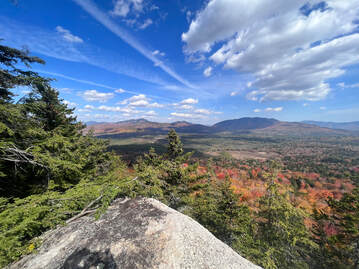 Another from Allen's Ledge looking toward Carrigain. Another from Allen's Ledge looking toward Carrigain. After the peak I started down. With a little gas left in my metaphorical tank, I decided to take the diversion out to Allen's Ledge. Here, again, I could look over the Oliverian Brook valley. These ledges were off the main trail. There was no one else around. I spent about 40 minutes admiring the silence and the colorful display. It was easy to imagine being up there in other seasons. Probably winter, in particular, would be delightful on the ledges here. Maybe I will go see it then. The change of seasons that we witness in this way--just by looking out our windows every month or week of the year--can reflect our own personal seasons. Spring and fall have their easy, spectacular demonstrations of life and death. However, we also live through the pulsating heat and drought of summer. We survive the freezing cold of our winters. It is important to understand that there is beauty in times of desperate survival as well. Otherwise we will not get through the journey as well, will we? 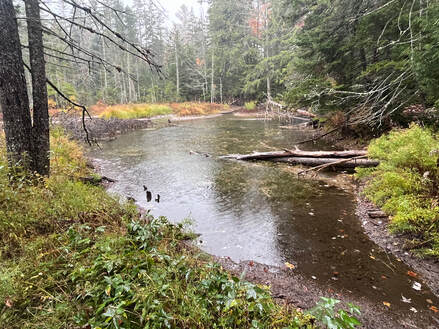 More rain on the Oliverian Brook Trail. More rain on the Oliverian Brook Trail. The next day--after a climb of Mount Israel that will be the subject of another post--I hiked along the Oliverian Brook. I was curious what the space between the mountains looked like from below the ledges. While I was there, the ferocious rain stripped many of the trees clean. The leaves gathered in muddy puddles along the trail, becoming soil in real time. Peak foliage is over for another year, but this new landscape had its own beauty to observe. I sat under the roots of an old tree along the brook and watched the current, the rain, and this year's bright color turn to the browns and grays that the snow will later outline like a Palmer painting. The cycle of life continues. Creation never ceases. We are blessed to participate and witness. And one final video. This one is not about peak color--quite the opposite--but I did do a longer video about Hedgehog...
0 Comments
Leave a Reply. |
Adam Tierney-EliotI am a full-time pastor in a small, progressive church in Massachusetts. This blog is about the non-church things I do to find spiritual sustenance. Archives
June 2024
Categories
All
|
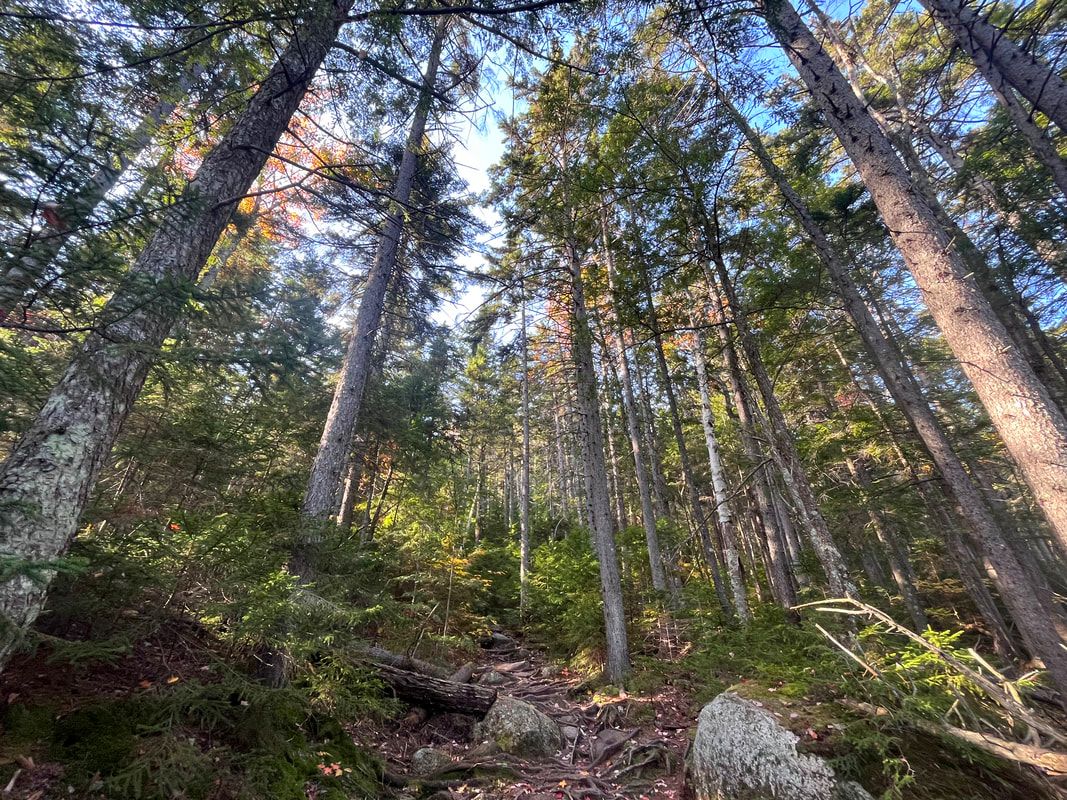
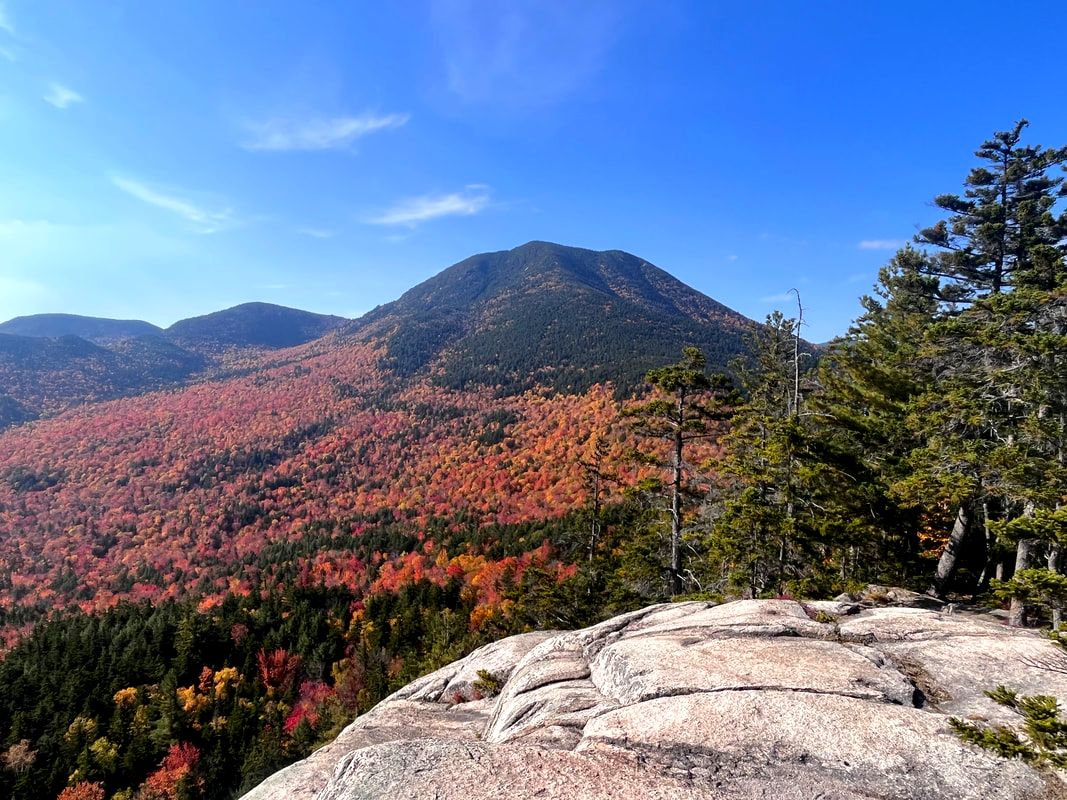
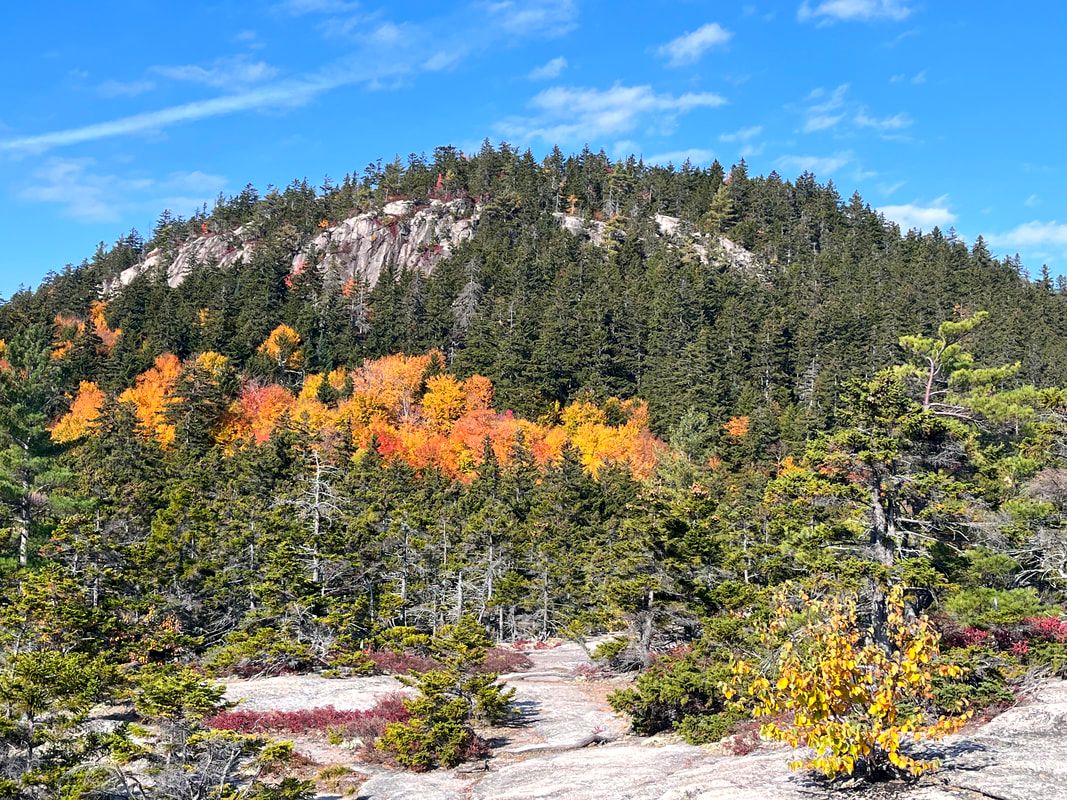
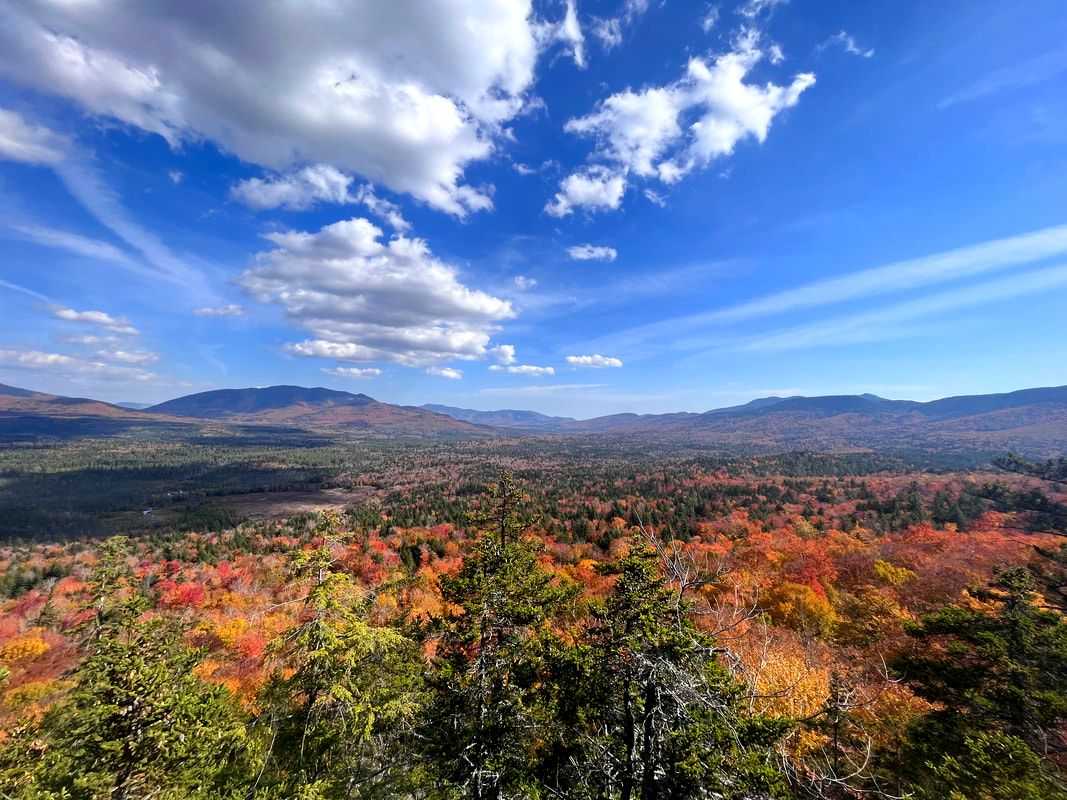
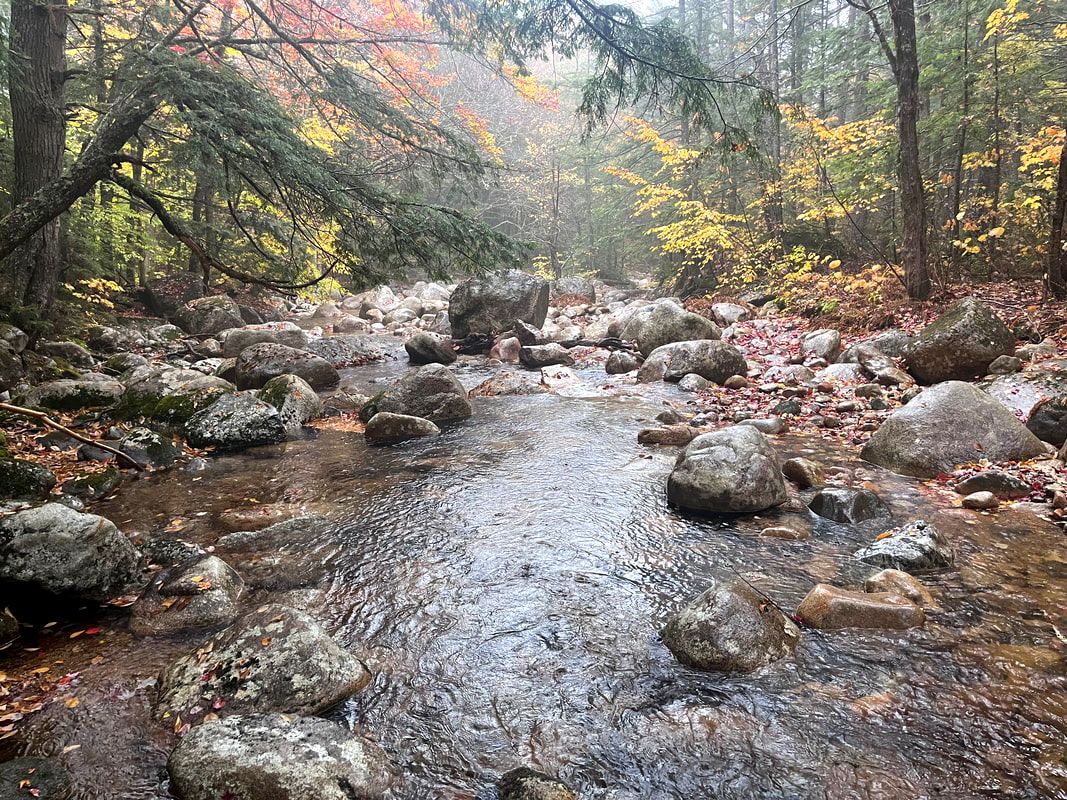
 RSS Feed
RSS Feed